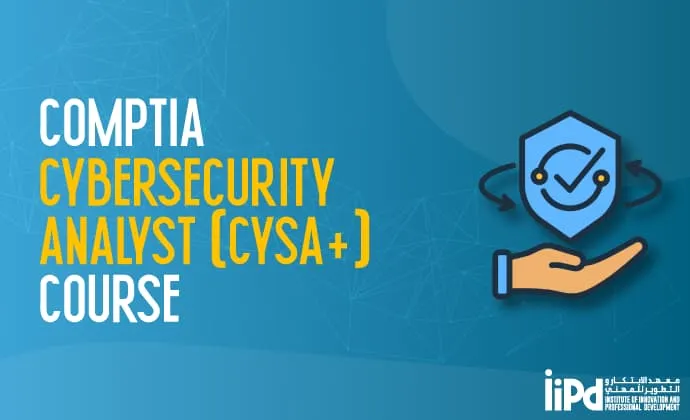
Course Details
Welcome to IIPD Global's CompTIA Cybersecurity Analyst Course in Dubai! As technology continues to advance, the need for skilled cybersecurity professionals is more critical than ever. Our comprehensive course is designed to equip you with the knowledge and skills to excel in the dynamic field of cybersecurity.
At IIPD Global, we understand the importance of staying ahead in the ever-evolving world of cybersecurity. That's why our CompTIA Cybersecurity Analyst Course is designed to provide you with a solid foundation in the principles and practices of cybersecurity.
Whether you are a seasoned IT professional looking to specialize in cybersecurity or a beginner seeking to enter this exciting field, our course caters to individuals of all levels of experience.
Objectives:
- Assess information security risks in computing and network environments.
- Analyze reconnaissance threats to computing and network environments.
- Analyze attacks on computing and network environments.
- Analyze post-attack techniques on computing and network environments.
- Implement a vulnerability management program.
- Collect cybersecurity intelligence.
- Analyze data collected from security and event logs.
- Perform active analysis on assets and networks.
- Respond to cybersecurity incidents.
- Investigate cybersecurity incidents.
- Address security issues with the organization's technology architecture.
Course Outline:
Below are the course content outlines; please contact us if you have any questions.
Threat and Vulnerability Management
- Explain the importance of threat data and intelligence.
- Given a scenario, utilize threat intelligence to support organizational security.
- Given a scenario, perform vulnerability management activities
- Given a scenario, analyze the output from common vulnerability assessment tools.
- Explain the threats and vulnerabilities associated with specialized technology.
- Explain the threats and vulnerabilities associated with operating in the cloud.
- Given a scenario, implement controls to mitigate attacks and software vulnerabilities.
Software and Systems Security
- Given a scenario, apply security solutions for infrastructure management.
- Explain software assurance best practices.
- Explain hardware assurance best practices.
Security Operations and Monitoring
- Given a scenario, analyze data as part of security monitoring activities.
- Given a scenario, implement configuration changes to existing controls to improve security.
- Explain the importance of proactive threat hunting.
- Compare and contrast automation concepts and technologies.
Incident Response
- Explain the importance of the incident response process.
- Given a scenario, apply the appropriate incident response procedure.
- Given an incident, analyze potential indicators of compromise.
- Given a scenario, utilize basic digital forensics techniques.
Compliance and Assessment
- Understand the importance of data privacy and protection.
- Given a scenario, apply security concepts in support of organizational risk mitigation.
- Explain the importance of frameworks, policies, procedures, and controls.
Pre-Requisite:
- There are no prerequisites for this course
Methodology:
- Batch-wise training
- Practical hands-on training with real-time examples
By enrolling in our CompTIA CySA+, you will not only enhance your skills and knowledge but also boost your career prospects. CompTIA certifications are highly recognized and respected in the industry, and our course is specifically designed to prepare you for the CompTIA Cybersecurity Analyst+ certification exam.
This globally recognized certification will validate your expertise in cybersecurity analysis and open doors to a wide range of exciting job opportunities.
Take the first step towards a successful career in cybersecurity by enrolling in our CompTIA Cybersecurity Analyst Course in Dubai. Contact us today to learn more about our course schedule, pricing options, and enrollment process. Don't miss this opportunity to become a highly sought-after cybersecurity professional and make a real difference in today's digital landscape.








